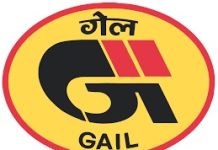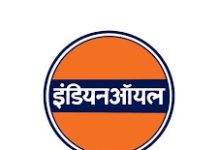Challenges in Corrosion Monitoring
- Human error during manual inspection leading to poor accuracy and repeatability of measurements
- Scaffolding support at difficult locations posing to safety risks to Industry personnel and also costly & time-consuming.
- High-Temperature In-Line Monitoring up to 150 Deg. C is not feasible with conventional ultrasonic (UT) and difficult for the operators
- Removal of insulation for frequent inspection at major points becomes costly and time consuming.
- Due to the high frequency of inspection, the process of calling professional at site becomes impractical and costly.
- Battery operated solutions are always risky for the critical fire sensitive location
Existing Conventional Methods
Ultrasonic testing (UT) is an inspection method for determining if there is internal corrosion or erosion in pipework and vessels. It is a manual method requiring skilled inspectors who travel to the assets to take the measurements. Issues can arise with access to the measurement locations (e.g. they can be underneath layers of insulation) and human error can lead to misrepresentative readings.
Fully automated, wireless, permanently installed monitoring systems (PIMS) offer an alternative to UT. These systems can be very cost-intensive, which makes them unfeasible for high volumes of monitoring locations. They may not be suited to a range of locations due to their size and requirement for a network.
Wireless, Battery Free Technology
The solution to the above issues lies in battery free, ultrasonic thickness sensors that are permanently installed to the surface of pipework or vessels. These sensors are activated by the electromagnetic signal sent by a handheld device . When activated, the sensor generates an ultrasonic pulse, which then gets reflected off the back wall of the structure being examined (often more than once).
An electromagnetic signal is transmitted by the Handheld Device , which activates the sensor. When activated, the sensor generates an ultrasonic pulse, which then gets reflected off the back wall of the structure being examined (often more than once) and an electromagnetic signal is returned by the sensor, which gets received by the Handheld Device .
The Handheld Device calculates the material thickness using either: the delay between the first and second ultrasonic echoes (peak to peak), or the delay between the initial ultrasonic pulse (time=0) and the first received ultrasonic echo (first arrival).
In addition to this, each sensor comes with an associated RFID to enable location tracking. The Handheld Device is equipped with an RFID reader which scans for the sensor RFID when a measurement is taken; the Handheld Device then automatically assigns the thickness value to the sensor RFID number. This means the user can know exactly where each thickness measurement comes from.

BENEFITS FOR THE CHEMICAL INDUSTRY
CHEMICAL MANUFACTURING PLANTS
THE NDT CHALLENGE OF THE CHEMICAL INDUSTRY
- Several areas of localized corrosion were identified on a sulfuric acid tank head that required frequent inspection. Manually inspecting at this frequency proved cost inefficient
- Pinpointing the same precise measurement locations during every manual inspection was problematic, due to the corrosion active area being small
- Human error was also leading to poor accuracy and repeatability of measurements for many of the surrounding pipes
THE OUTCOME OF ADAPTING THIS TECHNOLOGY.
- Very precise areas of localized corrosion could be carefully monitored using the sensors, from the exact same point every time and hence trending analysis can be easily done for future references.
- Measurements could be acquired however frequently, easily, and cost-effectively
- Acquiring thickness updates, without the need to perform a full manual inspection, provided greater flexibility to investigate suspected areas of corrosion and/or investigate the effects of changing process conditions on corrosion rates

CONCLUSION
Hence, the above technology, if incorporated by chemical manufacturing plants, would allow them to have more preventive maintenance decisions through accurate repeatable data. It would monitor high value assets economically, using low cost solutions and overcome the access limitations with Manual Ultrasonic Testing.
 Anurag Tripathi is a Team Leader – Business Development & Marketing at Arora Technologies Pvt. Ltd. He holds a bachelor’s degree in mechanical engineering from JNTU, Kakinada.
Anurag Tripathi is a Team Leader – Business Development & Marketing at Arora Technologies Pvt. Ltd. He holds a bachelor’s degree in mechanical engineering from JNTU, Kakinada.































